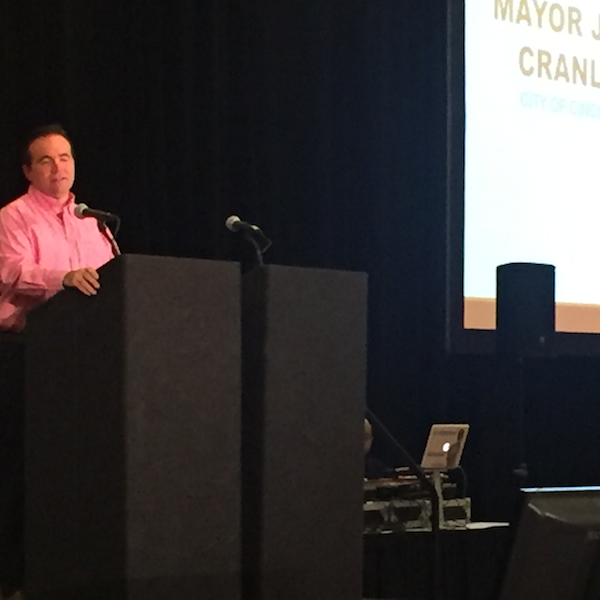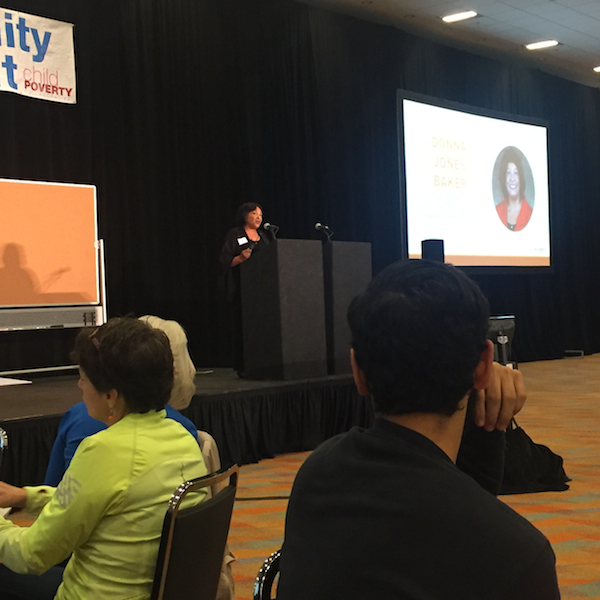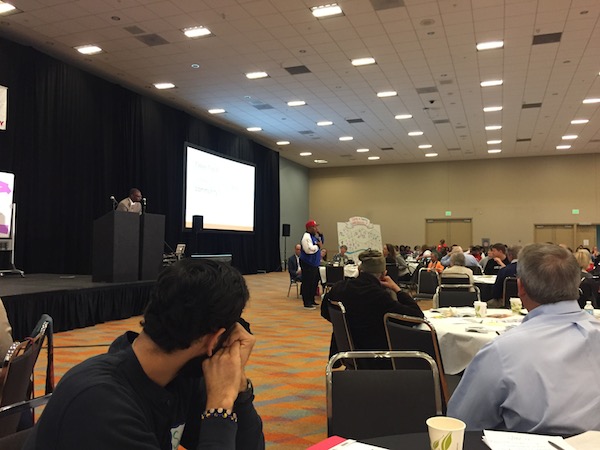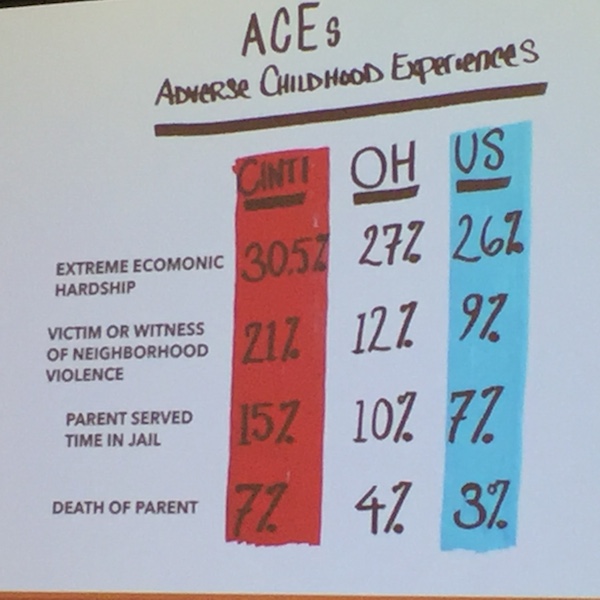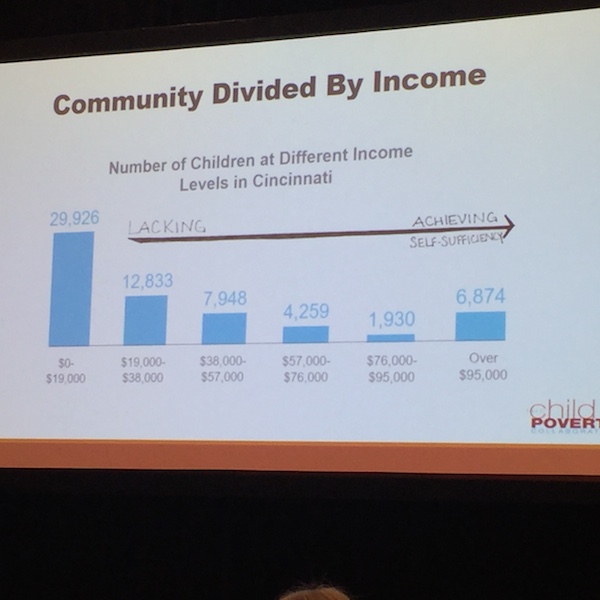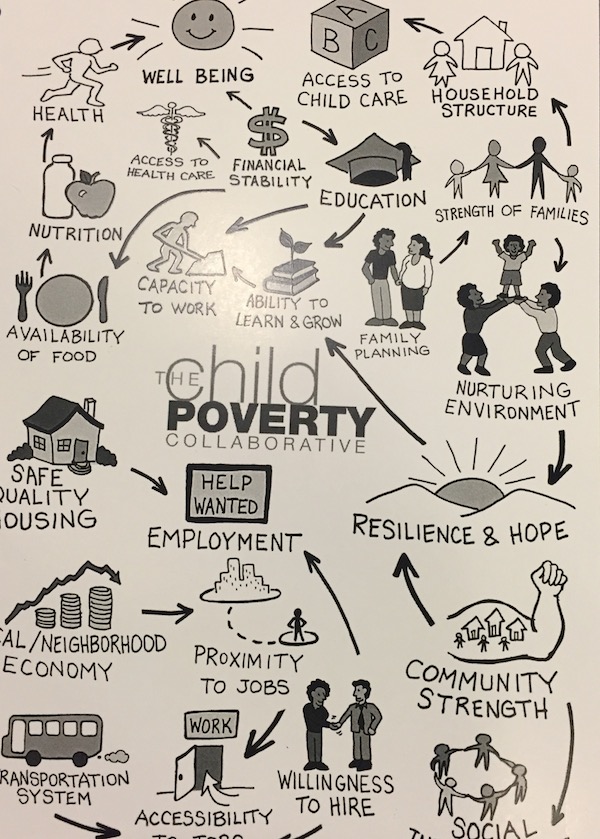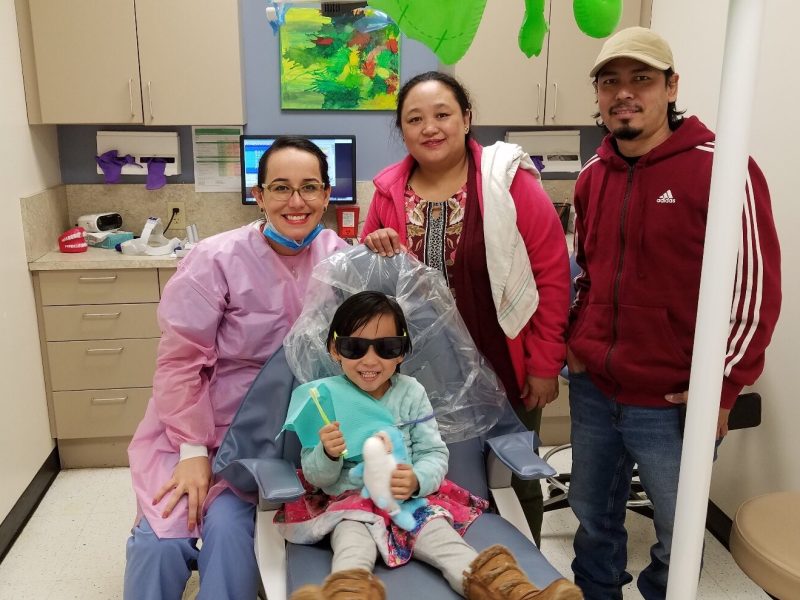Crowdsourcing Cincinnati’s Child Poverty Challenge
Over 700 gathered at Duke Convention Center Oct. 29 to brainstorm community solutions and initiatives to the childhood poverty dilemma. Cincinnati has the sixth highest rate of child poverty in the nation.
Getting your Trinity Audio player ready...
Over 700 educators, parents, nonprofit leaders, retired corporate leaders, social workers and others gathered at Duke Convention Center Oct. 29 to brainstorm community solutions and public policy changes to shift the dynamic of child poverty in the city. Cincinnati has the sixth highest rate of child poverty in the nation with 33,069 children living in poverty (a household income below $19,073 for a family of three). “We’re here to take personal responsibility for lifting 5,000 families, 10,000 children, out of poverty,” said Mayor John Cranley opening the Child Poverty Summit as the crowd cheered.
Mayor Cranley, who was joined by Michael Fisher, ceo of Cincinnati Children’s Hospital, convened the collaborative to figure out ways to move 10,000 children and their families out of poverty by 2021 by building a data-informed, community driven action plan. The three-hour Child Poverty Summit reviewed findings from the RAND data research, included community brainstorming sessions, identification of key challenges and innovative potential solutions.
Difficult conversations
“This will entail some difficult conversations about race,” cautioned Donna Jones Baker, president and ceo of the Greater Cincinnati Urban League, noting that 75 percent of children in impoverished families are black. She related a story about code switching to illustrate the importance of being attuned to cultural issues and communication: Child welfare workers were dismayed while interviewing a child to hear her say that she didn’t own a “robe or slippers,” but Jones Baker discovered she did have “a housecoat and two pairs of house shoes.” The child was not removed from her home.
Lynn Marmer, a former Kroger executive and CPS school board member who is now executive director of the Childhood Poverty Collective, and Chara Fisher Jackson, executive director of the Greater Cincinnati Urban League, revealed the RAND study’s sobering findings. Nearly 40 percent of Cincinnati children live in poverty. Of those 33,069 children, 67 percent live in a home headed by working single mothers.
Crowdsourced community solutions
Our table was comprised of a mix of generations, genders and walks of life — Hispanic, Indian, South American immigrant, nonprofit exec, retired, young mother and empty nester. A retiree on a second career in corporate outplacement expressedsurprise at the $50,000 salary a family of three required for self sufficiency when childcare, healthcare and rental housing were factored in.One of the most significant costs young families face is childcare. The average cost of full-time child care is $8482 per child in Ohio, while after school care runs about $4800 a year per child in this market. Child care is expensive concurred Myrita Craig, chief operating officer of the Cincinnati YMCA, “But it’s important to pay our workers a living wage too, or we perpetuate the cycle.” The YMCA is the largest provider of child care in the region.
A social worker was not surprised by the percent of children who had experienced an adverse childhood experience, ACE, which destabilizes children and impedes learning. Cincinnati’s children in poverty experienced childhood trauma at a much higher rate than state or national averages: 30 percent of children have experienced extreme economic hardship such as homelessness or chronic hunger.
But, in the following categories Cincinnati children experience trauma at double the national average: 21 percent of children have been a victim of or witnessed neighborhood violence, 15 percent of children have a parent in jail, 7 percent of children have experienced the death of a parent.
As emcee and WLWT television personality Courtis Fuller invited the groups to debrief and share their findings one man drew a standing ovation lamenting the absence and exile of black men from their homes and families. “Growing up the only job opportunity I saw was drug dealer,” he said, noting that the community must demonstrate path out of poverty. Welcoming men back into homes is essential he explained, noting that if a woman is receiving government financial assistance the man cannot be present in the home. “A whole team does better when an injured player is helped,” he concluded as the audience rose to its feet clapping.
The solutions discussed ranged from affordable childcare, housing developments to co-housing to come around struggling single parent families. Co-housing is the formation of an intentional community to integrate families of all life stages and socioeconomic groups to draw on the strengths of community building. Popular in urban areas of diverse neighborhoods, co-housing centers on shared values and sustainability. There are shared recreational and community spaces, and typically a mix of small square footage, affordable housing styles, from cottages, to townhouses and lofts.
As the summit drew to a close, Marmer asked participants to consider their own commitment to lifting children out of poverty, touching on tutoring and mentoring, noting that Greater Cincinnati United Way will dedicate a greater share of its funds to address child poverty in 2017. United Way announced on Friday that $62.1 million was raised in the 2016 campaign.


